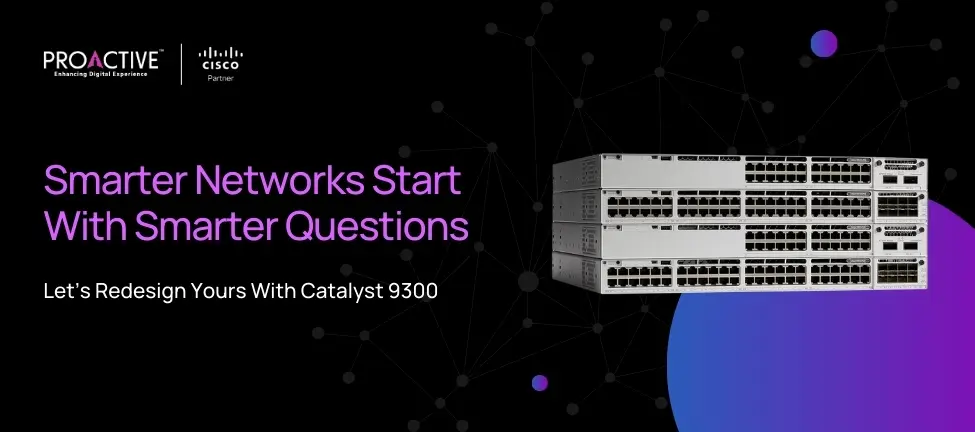Updated: Aug 18, 2025

If you're an IT or network head evaluating the Catalyst 9300 Series, you already know it isn't just another switch. It's the new campus backbone for AI workloads, hybrid work, and high-throughput collaboration tools. But in India, deployment decisions go far beyond datasheets. You deal with legacy uplinks, underpowered IDFs, PoE needs that change every quarter, and vendor partners that treat rollouts as hardware drops.
So before you deploy a Catalyst 9300, take a step back. Are you making a product decision or a platform investment?
Cisco didn’t design the 9300 for incremental upgrades. It was built to support intent-based networking, microsegmentation, AI telemetry, and unified policy control. That makes it powerful, but also unforgiving if misaligned with your upstream and downstream architecture.
Most deployments fail not because of hardware, but because the assumptions made about the rest of the ecosystem were outdated.
Multiple campuses in Delhi NCR and Bengaluru still run mixed vendor access layers. The result is a patchwork of VLAN sprawl, inconsistent QoS, and security policy gaps. Catalyst 9300 was built for a single point of orchestration through DNA Center or Meraki Dashboard, depending on the SKU. Mixing it with unmanaged or legacy switches dilutes the operational and security benefits.
The bigger risk? Cyber insurance non-compliance. Several policies today require visibility and policy enforcement down to the port level. A mixed environment can't deliver that.
Too often, partners simply replicate past switch models while quoting 9300s. But the 9300 series has multiple variants: the 9300, 9300L, 9300X, and the C9350. Each comes with different uplink modularity, PoE budgets, stacking support, and network scale limits.
If you're planning for:
Then your power and throughput requirements aren’t generic. You need to size the switch with the same precision as your compute or storage clusters.
Licensing with Catalyst 9300 is not just for compliance. The DNA Essentials and Advantage tiers give you SD-Access, TrustSec, AI analytics, and policy control. Yet many Indian enterprises underbuy these subscriptions to cut costs, then fail to realize the platform's full value.
Proactive Data Systems has helped large-scale Indian retailers and manufacturing campuses run production-grade networks with full lifecycle automation through DNA Center. We’ve seen firsthand that under-licensing leads to underutilization, slower incident response, and increased SLA breaches.
If you’re investing in Catalyst 9300, don’t buy hardware. Buy capability.
Every Cisco Gold Partner isn’t the same. Some push gear. Others, like Proactive, co-architect and deliver with a services-first mindset.
Our NOCs offer 24x7 visibility post-deployment. This isn't support. It’s ownership.
Power outages. Real estate shortages in IDFs. Tight change windows. Diverse L1 cabling conditions.
Proactive’s design templates factor these in. We’ve deployed Catalyst 9300 in old co-operative banks with low ceiling access, in automotive plants with 50-year-old wiring, and in high-rise hospitals that couldn’t afford a 10-minute disruption. We’ve worked with what’s real, not what’s ideal.
Catalyst 9300 switches are not tactical investments. They're strategic infrastructure that shape user experience, security posture, and long-term automation maturity.
If you want a 9300 deployment that doesn’t just connect but elevates your enterprise, Proactive brings the architectural depth, deployment rigour, and post-sale accountability no generic partner can match.
Talk to us before you place that PO.